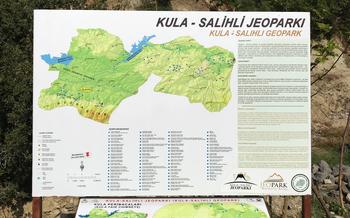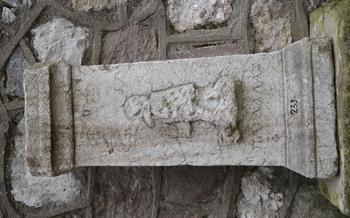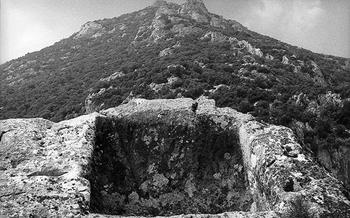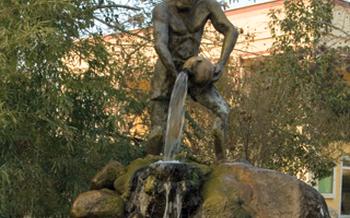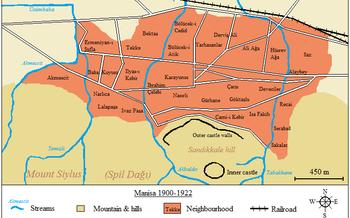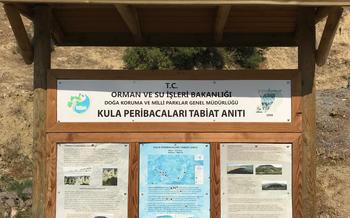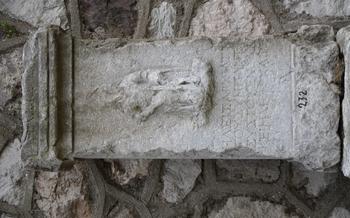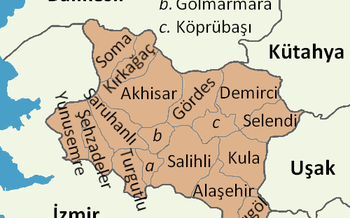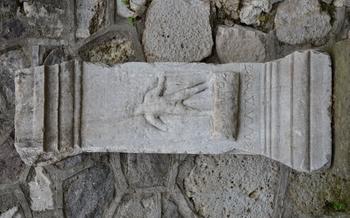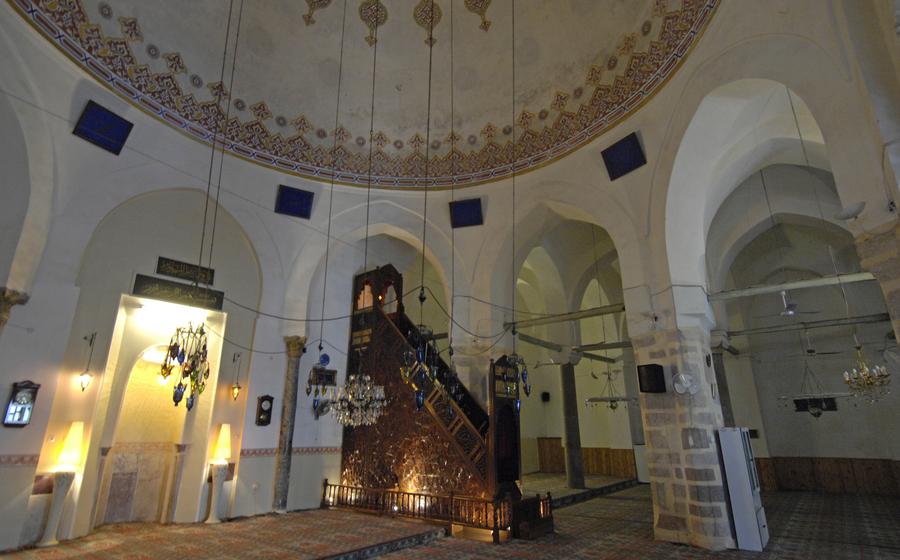
Kula Geothermal Power Plant
- Historical Background
- Geothermal Wonders
- Sustainable Energy Source
- Plant Operations
- Visiting the Plant
- Interactive Exhibits
- Guided Tours
- Hands-On Workshops
- Gift Shop and Souvenirs
- Surrounding Attractions:
- Local Cuisine
- Accommodation Options:
- Getting There:
- Best Time to Visit
- Insider Tip:
Historical Background
Kula, a town in western Turkey's Manisa province, has a rich history intertwined with geothermal energy. The region's geothermal potential was first recognized in the early 20th century, leading to the establishment of the Kula Geothermal Power Plant in 198This pioneering venture marked Turkey's first step toward harnessing geothermal energy for electricity generation.
The Kula Geothermal Power Plant played a crucial role in Turkey's renewable energy goals. The country aims to diversify its energy mix and reduce its reliance on imported fossil fuels. Geothermal energy emerged as a clean, sustainable alternative, and the success of the Kula plant paved the way for further geothermal development in Turkey. Today, Turkey ranks among the world's top ten geothermal energy producers, and the Kula plant remains a significant contributor to the country's renewable energy portfolio.
Geothermal Wonders
Kula is blessed with a unique geological setting that makes it an ideal location for geothermal energy production. The region lies within the Gediz Graben, a tectonic depression that has resulted in the formation of numerous hot springs and geothermal fields. The Earth's crust in this area is relatively thin, allowing geothermal fluids to rise closer to the surface. These fluids, heated by the Earth's internal heat, contain a wealth of thermal energy that can be harnessed to generate electricity.
The process of extracting geothermal energy begins with drilling deep wells into the Earth's crust. These wells are designed to intersect geothermal reservoirs, which are porous rock formations that contain hot water or steam. Once the wells are in place, pumps are used to extract the geothermal fluids from the reservoir. The fluids, which can reach temperatures of up to 200 degrees Celsius, are then piped to the geothermal power plant.
Sustainable Energy Source
The Kula Geothermal Power Plant is a shining example of the environmental benefits of geothermal energy compared to traditional fossil fuels. Unlike coal or natural gas, geothermal energy does not produce any greenhouse gases or air pollutants, making it a clean and sustainable source of electricity.
The plant's operations do not release harmful emissions into the atmosphere, contributing to the reduction of air pollution and improving the overall air quality in the region. By generating electricity from a renewable resource, the Kula Geothermal Power Plant plays a crucial role in combating climate change and promoting a sustainable energy future for Turkey.
The plant's commitment to environmental sustainability extends beyond its emission-free operations. The facility is designed with a focus on minimizing its environmental impact. The use of advanced technologies and efficient processes ensures that the plant operates with minimal water consumption and waste generation.
By embracing geothermal energy, the Kula Geothermal Power Plant demonstrates how renewable energy sources can provide reliable and sustainable electricity while safeguarding the environment for future generations.
Plant Operations
The Kula Geothermal Power Plant operates on a simple yet effective principle. Deep within the Earth's crust, hot water and steam are trapped under immense pressure. The plant utilizes this natural energy source by drilling wells to access these geothermal reservoirs. Once tapped, the high-pressure steam and water are directed through a series of pipes and valves, creating a powerful flow. This flow drives turbines connected to generators, which convert the mechanical energy into electricity. The electricity generated is then distributed to the national grid, providing clean and sustainable energy to homes, businesses, and industries across Turkey.
The plant's operation is a continuous cycle, with the extracted geothermal fluids being reinjected back into the reservoir. This reinjection process ensures the long-term sustainability of the geothermal resource and minimizes environmental impact. The plant is equipped with state-of-the-art monitoring and control systems to ensure efficient and safe operation, making it a model for responsible geothermal energy production.
Visiting the Plant
Visiting the Kula Geothermal Power Plant is a unique opportunity to learn about renewable energy and witness firsthand how geothermal energy is harnessed to generate electricity. The plant offers guided tours that provide a comprehensive overview of the entire process, from drilling wells to extracting steam and converting it into electricity. Visitors can also explore interactive exhibits and educational displays that explain the science behind geothermal energy in an engaging and accessible way.
For those interested in a more in-depth experience, the plant also offers hands-on workshops and educational programs that allow participants to learn about geothermal energy through practical activities. These workshops are suitable for all ages and provide a deeper understanding of the technology and its significance.
To ensure a safe and enjoyable visit, it is important to follow the safety guidelines and instructions provided by the plant staff. Visitors should wear closed-toe shoes and comfortable clothing, as they may be required to walk on uneven terrain or climb stairs. Photography and videography may be restricted in certain areas of the plant due to safety and security concerns.
Interactive Exhibits
The Kula Geothermal Power Plant offers a range of interactive exhibits and educational displays that bring the world of geothermal energy to life. These exhibits are designed to engage visitors of all ages, providing a fun and informative learning experience.
Visitors can explore interactive displays that demonstrate the principles of geothermal energy, such as how heat is generated deep within the Earth and how it can be harnessed to produce electricity. They can also learn about the history of geothermal energy in Kula and its significance in Turkey's renewable energy mix.
One of the highlights of the exhibits is a scale model of the Kula Geothermal Power Plant, which shows visitors how the plant operates and how geothermal energy is converted into electricity. Visitors can also see real-time data on the plant's performance and learn about the environmental benefits of geothermal energy compared to traditional fossil fuels.
Guided Tours
Guided tours of the Kula Geothermal Power Plant are available for visitors who want a more in-depth understanding of the plant's operations and the science behind geothermal energy. These tours are led by experienced guides who provide detailed explanations of the various components of the plant, including the wells, turbines, and generators. Visitors will learn about the history of geothermal energy in Turkey, the role of the Kula plant in the country's energy mix, and the environmental benefits of geothermal energy compared to traditional fossil fuels.
The tours typically last for about an hour and a half and include a visit to the plant's control room, where visitors can see how the plant is monitored and operated. Visitors will also have the opportunity to ask questions and take photos. Guided tours are available in Turkish and English and can be booked in advance through the plant's website or by contacting the plant directly.
Hands-On Workshops
The Kula Geothermal Power Plant offers a variety of hands-on workshops and educational programs that provide visitors with a deeper understanding of geothermal energy through practical activities. These workshops are designed to be engaging and informative, allowing participants to learn about the science and technology behind geothermal energy in a fun and interactive way.
One popular workshop is the "Build Your Own Geothermal Power Plant" activity, where participants construct a small-scale model of a geothermal power plant using everyday materials. This hands-on experience helps participants visualize the process of extracting geothermal energy from the Earth and converting it into electricity.
Another workshop, "The Power of Steam," allows participants to experiment with steam turbines and generators to understand how geothermal energy is used to generate electricity. Participants can adjust the temperature and pressure of the steam to see how it affects the power output of the turbine.
These workshops are suitable for people of all ages and backgrounds, and they are a great way to learn more about geothermal energy and its potential as a sustainable energy source.
Gift Shop and Souvenirs
The Kula Geothermal Power Plant features a gift shop where visitors can purchase a variety of souvenirs and educational materials related to geothermal energy. The shop offers a range of items, including books, DVDs, and interactive games that provide insights into the science and technology behind geothermal power generation. Visitors can also find unique souvenirs such as t-shirts, mugs, and keychains that serve as mementos of their visit to the plant. The gift shop provides an opportunity for visitors to take home a piece of their geothermal experience and share their knowledge with others.
Surrounding Attractions:
Kula is not only home to the fascinating Kula Geothermal Power Plant but also offers a range of nearby attractions that visitors can explore to enhance their trip. Just a short drive away, nature enthusiasts can marvel at the stunning Manisa Gölü, a picturesque lake surrounded by lush greenery and diverse wildlife. Take a leisurely stroll along its shores, enjoy a peaceful picnic amidst the tranquil atmosphere, or indulge in birdwatching to spot the many species that call this lake their home.
For those seeking cultural immersion, the historic city of Manisa is a must-visit. Explore the impressive ruins of Sardis, once the capital of the ancient kingdom of Lydia, and step back in time as you wander through its well-preserved streets. Don't miss the opportunity to visit the Manisa Museum, which houses a wealth of artifacts and exhibits showcasing the region's rich history and cultural heritage.
Adventure seekers can embark on a thrilling paragliding experience from the nearby Bozdağ Mountain, soaring high above the breathtaking scenery of the region. For a more relaxed adventure, take a scenic hike or mountain bike ride through the picturesque landscapes, immersing yourself in the natural beauty that surrounds Kula.
Local Cuisine
A visit to Kula offers a chance to savor the delights of traditional Turkish cuisine. Indulge in the aromatic flavors of testi kebabı, a succulent lamb dish slow-cooked in a sealed clay pot. For a taste of local specialties, try the Kula pidesi, a crispy flatbread topped with an assortment of ingredients like cheese, minced meat, or vegetables. Don't miss the region's renowned cevizli sucuk, a sweet and savory sausage made with walnuts, spices, and grape molasses. As you explore Kula's culinary scene, be sure to relish the Kula üzümü, a variety of sweet and juicy grapes grown in the region.
Accommodation Options:
Kula offers a range of accommodation options to suit different budgets and preferences. For a luxurious stay, the Kula Thermal Hotel is a popular choice, featuring elegant rooms, a spa, and stunning views of the surrounding countryside. For a more affordable option, several guesthouses and bed and breakfasts provide comfortable accommodations at reasonable prices. If you prefer a more immersive experience, consider staying at a traditional Turkish village house or a local homestay, where you can interact with the friendly locals and learn about their culture and customs. Whether you seek comfort, affordability, or authenticity, Kula has accommodation options to cater to every traveler's needs.
Getting There:
Reaching the Kula Geothermal Power Plant is a breeze, whether you prefer the convenience of public transportation or the freedom of your own vehicle. If you're traveling by bus, hop on one of the regular services that depart from Manisa's central bus station. The journey takes approximately 1 hour and 30 minutes, and you'll be dropped off right outside the plant's entrance.
For those who prefer the flexibility of a private vehicle, the drive from Manisa to Kula takes about an hour. Simply follow the D550 road, which is well-maintained and offers scenic views of the countryside. Once you reach Kula, look for signs directing you to the geothermal power plant, which is situated just outside the town.
No matter which mode of transport you choose, the Kula Geothermal Power Plant is easily accessible and well worth the journey. Immerse yourself in the wonders of geothermal energy and discover the sustainable future that awaits us.
Best Time to Visit
The best time to visit the Kula Geothermal Power Plant is during the spring or fall, as the weather is mild and pleasant. During these seasons, visitors can comfortably explore the outdoor exhibits and surrounding areas. The summer months can be hot and dry, while the winters are cold and snowy, making it less ideal for outdoor activities.
In addition to the weather, the time of year also affects the availability of certain attractions and events. For example, guided tours may be more frequent during the peak tourist season, and special events or workshops may be offered during specific times of the year.
To make the most of your visit, consider checking the Kula Geothermal Power Plant website or contacting them directly to inquire about upcoming events or special programs. This will help you plan your trip accordingly and ensure that you have the best possible experience.
Insider Tip:
Visiting the Kula Geothermal Power Plant during the annual Kula Geothermal Festival is a unique and enriching experience. Held in the summer, this festival celebrates the region's geothermal heritage and offers a range of activities, including guided tours, workshops, and cultural performances. Immerse yourself in the vibrant atmosphere, learn about geothermal energy in a fun and interactive way, and connect with the local community. Be sure to sample the delicious local cuisine and soak in the breathtaking natural beauty of the surrounding area. The festival is a fantastic opportunity to gain a deeper understanding of geothermal energy while enjoying a memorable and immersive cultural experience.
